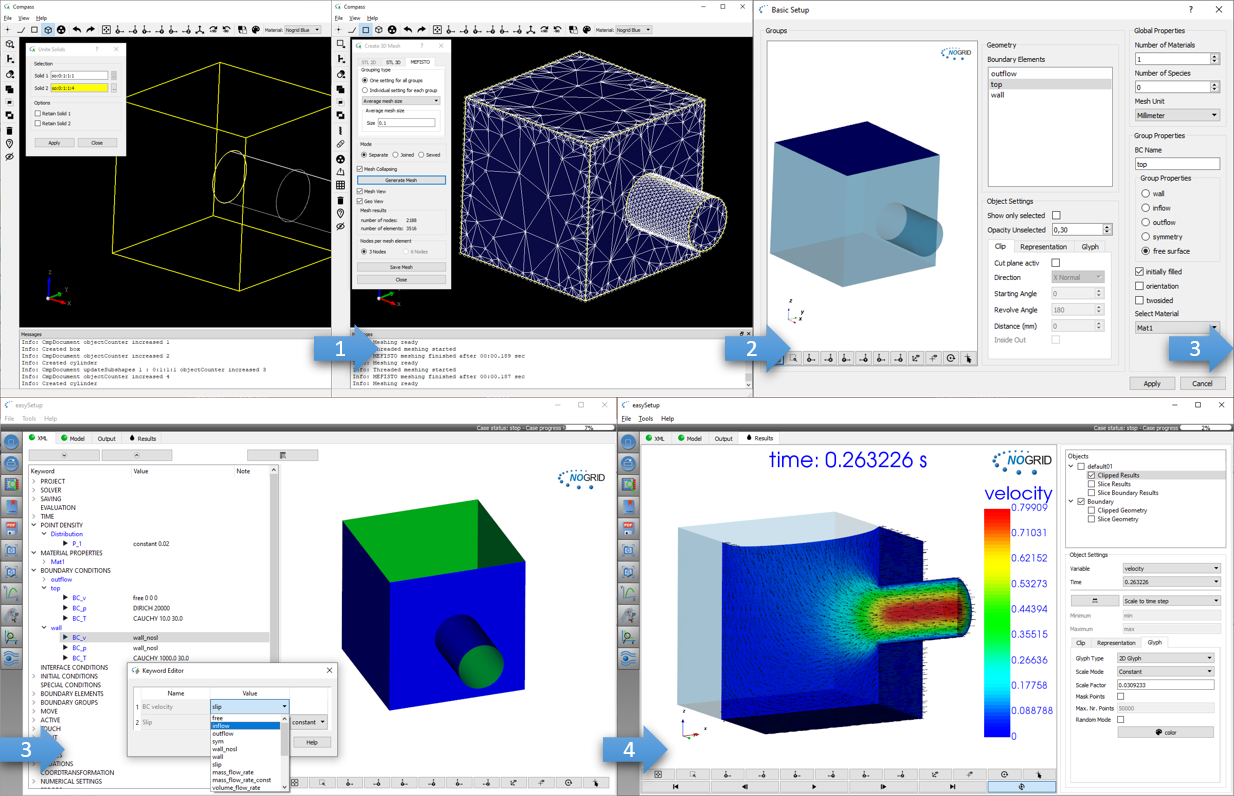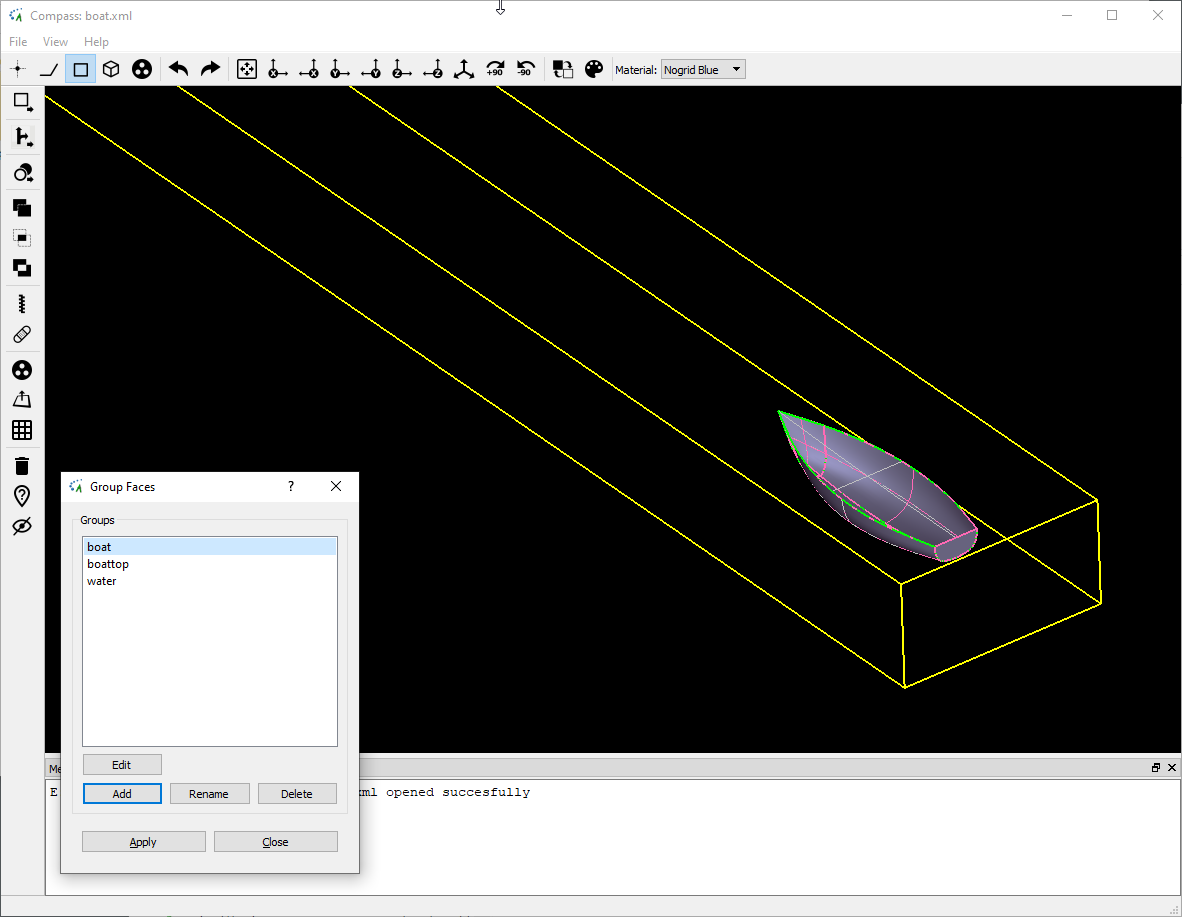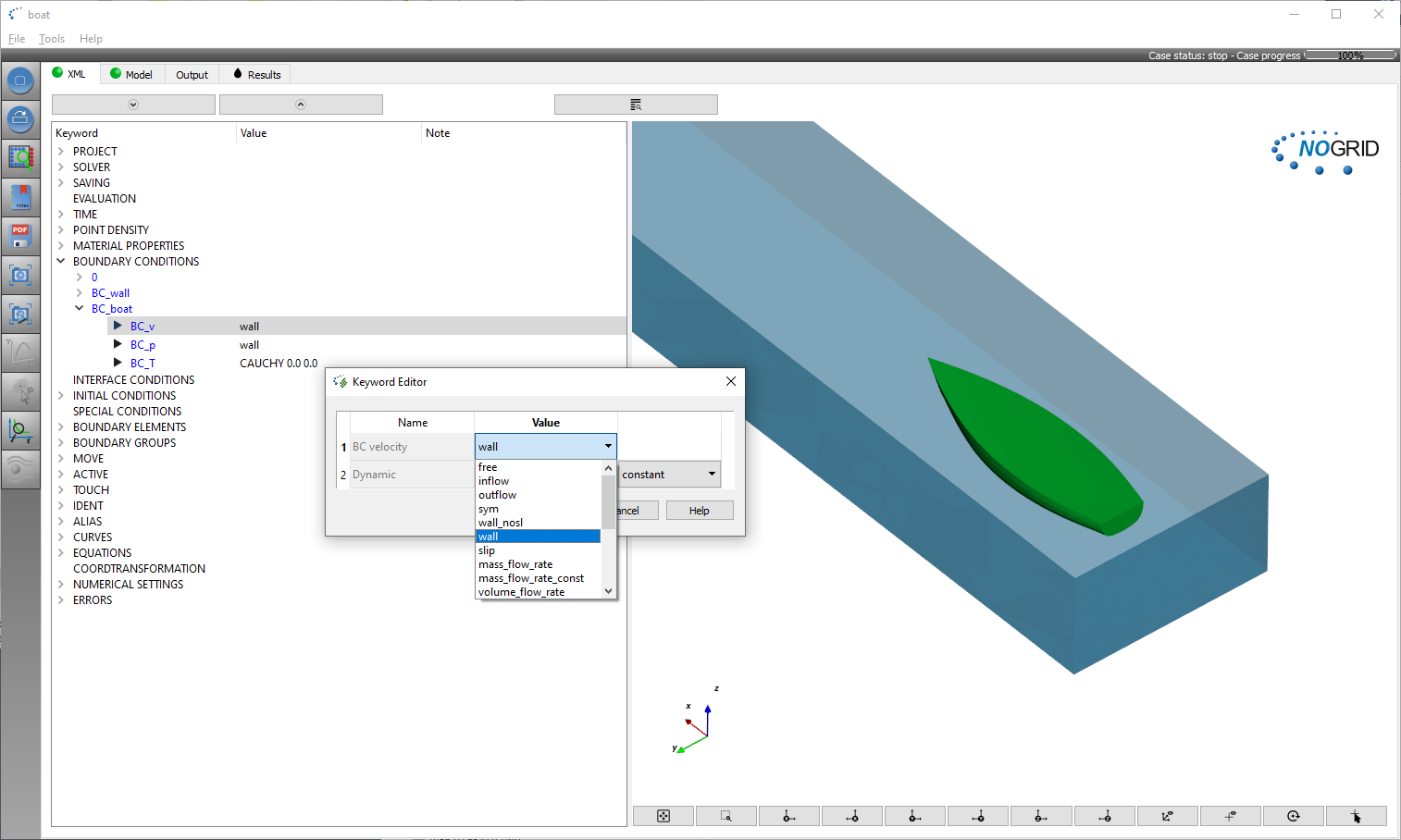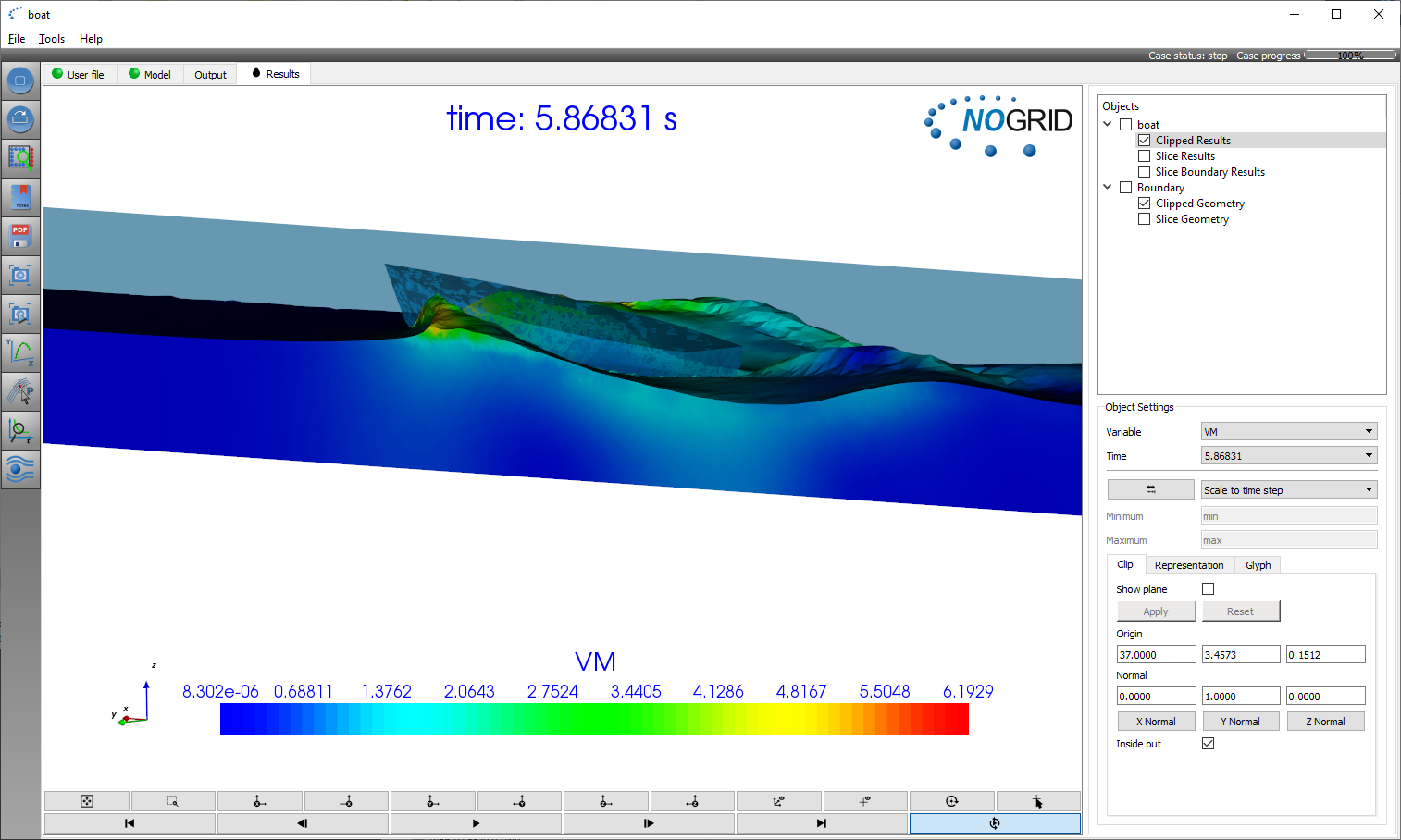Simulation Accelerated Boat
The simulation of an accelerated boat can perfectly be performed with NOGRID points CFD software.
Free surfaces in fluid mechanical systems are a great challenge for numerical simulation methods in themselves. However, many applications additionally exhibit moving structures interacting with the fluid. In most cases a realistic modeling with today's standard software is simply not feasible or would at least require a non-economical amount of time and computational power to solve every-days' simulation problems. One such example is the simulation of a boat being accelerated until it reaches its final inclination determined by its hull shape and its speed.
A good understanding of this lifting process is mandatory for guiding the design and optimization of the hull. In grid-based methods such simulations are usually more simplified. Instead of allowing the boat moving freely during acceleration, the boat hull is entirely fixed or at most rotation around one axis is possible (thus reducing the degrees of freedom to zero or one), whereas the water flows with the velocity the boat should run with. This technique reduces computation time and numeric imprecision due to remeshing. It also gives a first insight into the fluid mechanical properties of the boat hull. However, it never provides the full information required for an in-depth understanding necessary in the design process. Rotational instabilities of a freely moving boat cannot be analyzed to name just one challenge.
Modeling abilities of NOGRID points
In contrast NOGRID points software, a meshless CFD (computational fluid dynamics) software, based on FPM (Finite Pointset Method) permits several approaches for modeling the described scenario realistically. No restrictions on the movability of the boat are prescribed. In particular all six degrees of freedom, three for the velocity and three for the rotation of the rigid boat hull, are available. In the approach presented here the boat rests in a box partly filled with water. The boat hull is modeled as a set of faces which can freely move in the water. The fluid-structure interaction of the water with these faces is further determined by the center of gravity of the boat, by its mass and by its inertial tensor. Beginning at time t=0 an outer force and (small) torque is applied to the center of gravity (generated by the thrust of the propellers), and which now starts to accelerate the boat.
The simulated time is 20 seconds, the computation time of the simulation (done on a normal desktop computer equipped with a quad core processor) was about 5 hours. NOGRID points provides the means for economical support design and development in engineering, both drastically reducing time spent on preprocessing as well as computation time.
NOGRID unites abilities to handle multi-phase flows and allows the simulation of any conceivable geometry and operation modes such as
- computation is in full 3D solving complete Navier-Stokes-Equations
- easy and intuitive setup of the multi-phase flow case
- free definable material properties by equations or curves for each fluid
- large geometries with small gaps or holes
- open or closed domains including moving of additional parts
- any material combination for the fluids
The role of finite points in NOGRID points
In NOGRID points finite points assume the role of the mesh used in FEM or FVM based methods. Beside the physical parameters of the model the user only has to determine the approximate density of these finite points. Tedious meshing and inaccurate and inefficient remeshing is not required since each finite point moves with the velocity of the fluid or (boat hull) face it belongs to. This Lagrangian view allows free surfaces and moving objects in a natural way. (It also allows directly utilizing the substantial derivatives in the Navier-Stokes equation, reducing the number of discrete derivatives to be computed and therefore increasing accuracy and efficiency.) For the boat model the exact flow of the water farther away from the boat hull is of no interest, hence a very sparse finite point density is chosen. In contrast, the water around the boat hull is resolved with high precision to allow an accurate computation of the lifting.
The finite point management is completely done by NOGRID points and is not visible to the user. At the beginning of the simulation finite points are inserted according to the prescribed finite point density until the fluid and the faces are completely filled out. If finite points move apart during the simulation and holes occur in the finite point cloud, additional finite points are automatically inserted. Similarly, two finite points which have converged too close to each other are replaced by a single finite point. (It should be mentioned that such operations occur only scarcely and so do not compromise accuracy and efficiency as extensive remeshing and interpolation does in grid-based methods.)
Outlook
As mentioned above, further approaches are offered by the simulation abilities of NOGRID points providing an even more complete picture of the flow phenomena involved. These include the replacement of the explicit external force by a propeller, for example modeled by a small cylinder with a mass flow through the cylinder set to the mass flow generated by the propeller (computation time would increase only slightly). If required the propeller itself could be computed in detail.
If the boat is composed of a flexible structure where the elasticity of the hull influences the fluid dynamical behavior, the hull could be represented by a second phase with elastic material properties (which gives in fact a multi-phase flow with a viscous and an elastic phase).
Nogrid's strengths

Easy and fast modelling: Build geometry, mesh boundary, setup the case and start computation
What is CFD from NOGRID?
CFD solves the fundamental equations that define the fluid flow process. With CFD software from NOGRID every engineer makes better decisions by predicting, analyzing and controlling fluid flow, heat and mass transfer or chemical reaction. By using NOGRID software for flow modeling you receive information on essential flow characteristics as for example flow distribution. Using it additional to testing and experimentation NOGRID software helps to improve the evaluation of your design – resulting in better construction and operation parameters, increasing planning security and money savings due to faster time to the marketplace for your product or process.
Choose NOGRID
With NOGRID, you choose professional CFD software and services – our aim is helping you to be successful. When you decide to work with NOGRID you choose close cooperation with a dynamic, flat hierarchies-organization. Short information channels result in quick and accurate professional support and service. Our team consists of highly qualified employees, who are experts in fields such as numerical simulation or computational fluid dynamics. Based on our know-how, we are pleased to offer the following services, responding to your individual requirements:
TRAINING
In our two-days training courses you will learn, how to use NOGRID CFD software efficiently. Our technical support team will teach you how to handle and solve different cases.
For more details please refer to Training Courses →
Technical Support
We offer full professional support from the minute you start using our software, by telephone or by email. Contact us, when ever needed.
For more details please refer to Software Support →
Service
Lack of time or resources and other constraints often make outsourcing an attractive solution. We help you with your flow modeling needs. Based on our engineering expertise in this field we offer individual numerical simulation services matching the unique needs of your organization.
For more details please refer to Simulation Services →




